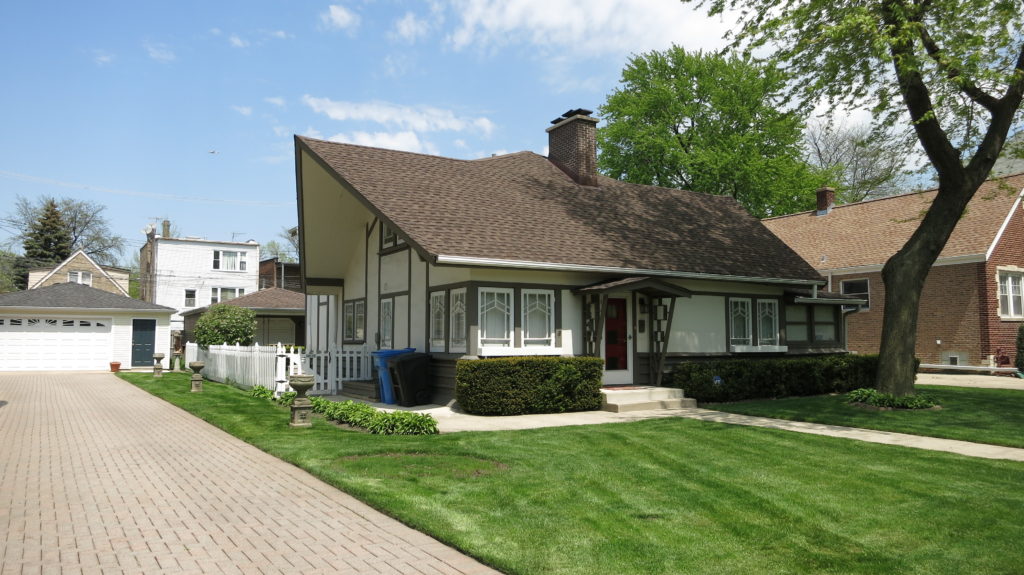I grew up in Cleveland, Ohio. There are many similarities between the metropolitan areas of Cleveland and Chicago beyond geography and weather. The cities were contemporaries in development and shared many features and attributes. My immediate impressions of the most obvious similitudes were the same mid-western, gritty, industrial, neighborhood rich, aspirational city with common culture, diversity, and government, but for my most direct interests, very similar architecture.
I grew up immersed in architectural appreciation. From a young age, my father was involved in local historic preservation groups. Our family loved old architecture. I grew to appreciate the craftsmanship of old buildings and moving to Chicago in the mid-90s felt like just like coming back home when I saw the buildings and houses and familiar lines and styles. In particular, I saw familiarity in the rugged and beautiful bungalows and simple worker’s homes and apartments. All of the familiar styles that evoked the more celebrated work of its parent style, and that of its preeminent practitioner and style-founder, Frank Lloyd Wright; the Prairie School.
Prairie style originated in Chicago and represents one of the few indigenous styles of American residential architecture. Primarily the work of a group of visionary Chicago architects taught, employed or influenced by the Chicago architect, Louis Sullivan (though he himself was not really a participant in this style), the style became to be known as the “Prairie school”. Frank Lloyd Wright is widely considered the master of the Prairie style. The style emphasizes horizontal lines, low pitched or flattened roofs, open plans, natural materials, contrasting wall materials, solid construction and decorative elements emphasizing both simplicity and craftsmanship. Often employing cantilevered sections and roof eves that overshot the building, they were rectilinear and geometric. An emphasis on the building’s interaction and role in the surrounding environment was a basic tenement of the Prairie School. The low-slung prairie lands with their wide spread, contrasting earth tones and openness were the literal inspiration of the architectural style who named it.
The Prairie school aesthetic and use of Arts and Crafts décor and carpentry was a perfect fit for a generation brought up during the Arts and Crafts movement. The style primarily existed from 1900 to 1920 and while widespread during its day, it was a short-lived style of architecture. In large part, its popularity in and outside of Chicago was made possible by the publication of pattern books detailing style elements that could easily be used and copied by architects, builders and craftsmen far and wide.
Prairie homes are typically homes with low-pitched hipped roofs. The eaves of the roof often overhung well past the building walls. Most typically, they were two-story homes, but often employed wide porches, carports, or areas of single-story construction with their own hipped roofs to emphasize flatness. Horizontal lines are a focused theme on many homes. Windows are typically grouped together in tight vertical patterns to form a large horizontal feature. Massive square, rectangular, or pitched piers of masonry, brick or wood are common element in many Prairie homes.
Prairie style homes are found throughout the Midwest, and the style is intermingled, influenced by, and influencing on many other Chicago housing types, particularly the American Foursquare, the Bungalow, Craftsman, some Mission Style and the multi-unit brick flats.
Prairie Tour One is the first edition in a tour series celebrating the Prairie School architecture in and around Chicago. This first installation will focus on the northwest side of the city and we will visit dozens of exceptional examples of the style in Irving Park, the Villa, Portage Park, Albany Park, Mayfair and North Mayfair, Lincoln Square and Ravenswood Manor. We will see masterwork by many innovators of the style, including style founders such as Dwight Perkins, Walter Burley Griffin, Pond and Pond and Clarence Hatzfeld as well as the primary influencer on the entire Prairie School cannon, Louis Sullivan.
This tour will take place this Saturday, May 14 at 11:00 AM at Independence Park at 3945 N Springfield (Irving Park and Springfield). Here are links for more information:
Prairie Tour One Event Page | Facebook Page | Chainlink Page | Ross Felten designed Tour Poster | Google Map of Tour | Purchase Tickets
Here is the map of the tour, including sites of interest and route.

